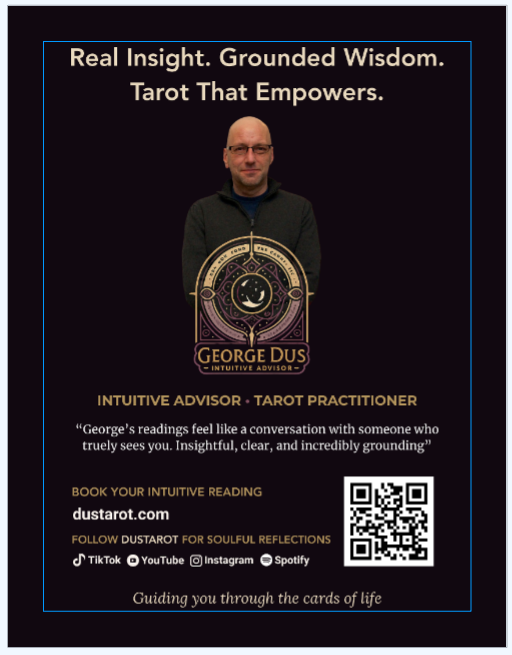Being Single is Not a Waiting Space
- Jan 15, 2024
- 6 min read
Embody Self Love Instead - Part 1

Being Single is Not a Waiting Space – Embody Self Love Instead Since November 2022, I found myself in a different relationship space – being a single widowhood. With the festive season - couples walking arm in arm and the romantic holiday movies and songs, creates a melancholy state.
But, alas, I figure self love and comfort in and with my own company is better. Having self-love involves having an appreciation and respect for self by taking care of physical and mental health, thus nourishing and treating self with the love and kindness I deserve.
What Is Self-Love?
Self-love is having regard for our own well-being and contentment. For some, self love is the equivalent with taking baths and getting massages, but loving yourself goes much deeper than occasionally splurging on pleasures like these.
Self love should be a daily practice when you check in on yourself and treat yourself the way you treat those you love. Self love comes from actions that support physical, psychological, and spiritual growth.
Your first relationship is with yourself and is the foundation of relationships with others. Loving yourself enables you to live in alignment with your values and make healthy choices related to everyday decisions. Confidence, self-respect, self-worth, and self-love are all interconnected. As we deepen our love for ourselves, we deepen the love we share with others.
Being single as an adult for an extended period of time can be painful experience — and one that feels like it will never end. There’s a reason why the grief that accompanies singlehood when one longs to be in a relationship — feels unending. Some describe it as an experience known as ambiguous loss.
When we lose people we love it is devastating, the grief we experience can eventually give way to healing. By contrast, an ambiguous loss is one that is unclear because the loved one is “there but not there.”
Two situations can lead to ambiguous loss. The first situation is when the person is physically present yet psychologically absent. This would include conditions such as dementia,addiction, extra-marital affairs, and workaholism. The second situation is when a person is psychologically present yet physically absent. This may include wartime, missing-in-action, natural disaster, divorce, and miscarriage.
Prolonged singlehood as an adult, when one wishes to be married or in relationship, is a form of ambiguous loss. Often, single people have an idea of who their anticipated partner is, and what the relationship will be like when they finally meet. In other words, the anticipated partner is psychologically present but physically absent.
Unable to predict the future, a single person cannot know for certain whether they will meet and marry their match. This lack of certainty about the yet-to-be partner makes the loss ambiguous, and in turn difficult to resolve.
A single person who knows for sure that they will remain so would face a clear loss. A person who knows for sure that they will marry in a decade would face a delay in getting married, but can find comfort in knowing that they will have a partner in the future.
Ambiguous loss leads to ambivalence. This is because it's difficult to determine whether it is better to cope with the lack of information about a longed-for spouse by hanging on or moving on. The uncertainty of whether the anticipated spouse will materialize makes it difficult to fully close the door and grieve. Since there is always hope, closure is difficult. The sadness can render people immobile, making it difficult to move forward. The stage of ambivalence is set for grief without end.
The ambivalence that stems from adult singlehood ambiguous loss can evolve from the following:
·Timing, which refers to defining when singlehood begins.
·Settling, which refers to the dilemma of whether or not to settle for a partner who does not meet the ideal or whether to prolong singlehood with the hopes that one’s ideal partner will materialize.
·Viability, which refers to people the single person actually knows and sees as a potential partner yet are not viable options for partnership.
·Children, referring to the ambiguous loss that single and childless adults may feel about anticipated children, who might also be psychologically present, but physically absent.
1. Normalizing Ambivalence
Often, single adults who have been so for an extended period feel different, and their pain remains invisible. Therefore, just knowing that there are other singles who are also struggling with this form of ambiguous loss can be validating.
The process of labeling the loss as ambiguous, identifying conflicted feelings about the loss, and framing reactions to the loss as common also helps normalize ambivalence, which can ease anxiety, blame,guilt, sadness, and immobilization that stems from ambiguous loss. People can more easily manage pain if they understand and make sense of it.
2. Tempering Mastery
A key component of coping with ambiguity is overcoming the need for control over the ambiguous situation, without sinking into passivity. This is where tempering mastery comes in. It refers to having a clear understanding about the loss, and identifying what can and cannot be changed.
Tempering mastery is striking a balance between the need for control and acceptance of that which cannot be changed. Running from pain courts misery but accepting situations over which we have no control as they are can diminish it. In the case of single adulthood, people have control over searching for the type of person they want (e.g.,online dating, speed-dating, asking people on dates) but have limited control over finding their partner.
3. Finding Meaning
When a loss is stuck in ambiguity, it can be harder to find meaning. It may take extra efforts to make sense of loss, which would in turn allow for coping and grieving. Exploring one’s assumptions can facilitate finding meaning in extended singlehood.
Specifically:
(a) identifying and clarifying assumptions about life (one’s attitudes, beliefs, and values),
(b) examining how assumptions about life evolved,
(c) restructuring assumptions about life so they are better adapted to one’s current needs, and
(d) applying the restructured assumptions to the way one lives.
When our personal narrative about singlehood is formed and shared with important people in one’s life (therapist, family, friends, and or other single adults), it creates meaning about and promotes healing from the ambiguous loss. Engaging in fostering existing close relationships, volunteerism, and hobbies the following can dispel the feeling that life is less meaningful without a partner.
4. Reconstructing Identity
Initially, being single can become the defining feature of a person’s identity. However, singlehood is just a part of one’s identity — not the whole. Reconstructing one’s identity from the definition of being single to a more comprehensive and layered alignment can drive down ambivalence and prop up resiliency.
Being single can be complicated in terms of one’s identity. Single adults may have parents who want to play the role of the non-materialized partner, in an effort to provide support and comfort for their non-partnered children. Consequently, being single can result in identity ambiguity, it may leave some singles questioning whether they are an adult or a child.
Reorganizing the psychological family by modifying the way family is viewed, can be done in two ways. First is by reconstructing psychological family membership, in which there is membership in more than one family. The second is to reconstruct roles, which can help manage ambiguity. Since there is no division of labor single adults might find themselves undertaking tasks they hadn’t anticipated, such as cooking or doing yard work. Thinking about roles more flexibly can also reduce ambivalence and boost resilience.
5. Revising Attachment
Revising attachment refers to the “gradual process of learning to live with the prospect of recovering the lost person while simultaneously recognizing that the loss may become permanent.” Being able to think dialectically, which means considering multiple and even opposing views, can facilitate revising attachment and ultimately healing.
For singles, the challenge is to strike a balance between the opposing stances of staying connected and letting go. Over time, this can increase resilience. Jackson offers the following actionable steps: verbalizing fantasies about the would-be spouse, processing the loss, understanding how life transitions might give rise to anxiety about being single (e.g., being the only person in a friend group who is single or childless), finding self-expression through artistic pursuits, and engaging in groups and communities that are of interest where meaningful connections and relationships can be made. It may also be helpful to revise one’s expectations for a future spouse, and reconsider the qualities and characteristics that matter most.
6. Discovering Hope
When coping with ambiguous loss, the overarching goal is threefold: to determine which hopes should be let go, which hopes should be kept, and which new hopes can bring meaning and purpose to life. Jackson suggests the following for discovering hope: finding spirituality, imagining options,laughing at absurdity, developing more patience, redefining justice, and finding forgiveness.”
Moreover, and borrowing from narrative therapy, Jackson contends that singles can find hope through by (a) viewing the problem as external to oneself; (b) reexamining stories by seeing one’s own story from different perspectives, and considering alternative meanings and endings and (c) reauthoring one’s own stories. New and revised narratives can be integrated into one’s personal psychology by sharing them with family, friends, and other meaningful people, who can, in essence, serve as an “audience” for their new stories
Read part two in our March / April Issue

Helen Pearman Ziral, PhD is a purpose driven coach and facilitator whose work is centered around personal transformation and wellness. She assists women in uncovering their true essence and to shine as the person they are meant to be. Dr Helen Z has conducted individual and group coaching sessions and workshops about achieving the balance essential to multiple dimensions of wellness. https://drhelenz.com














Comentários